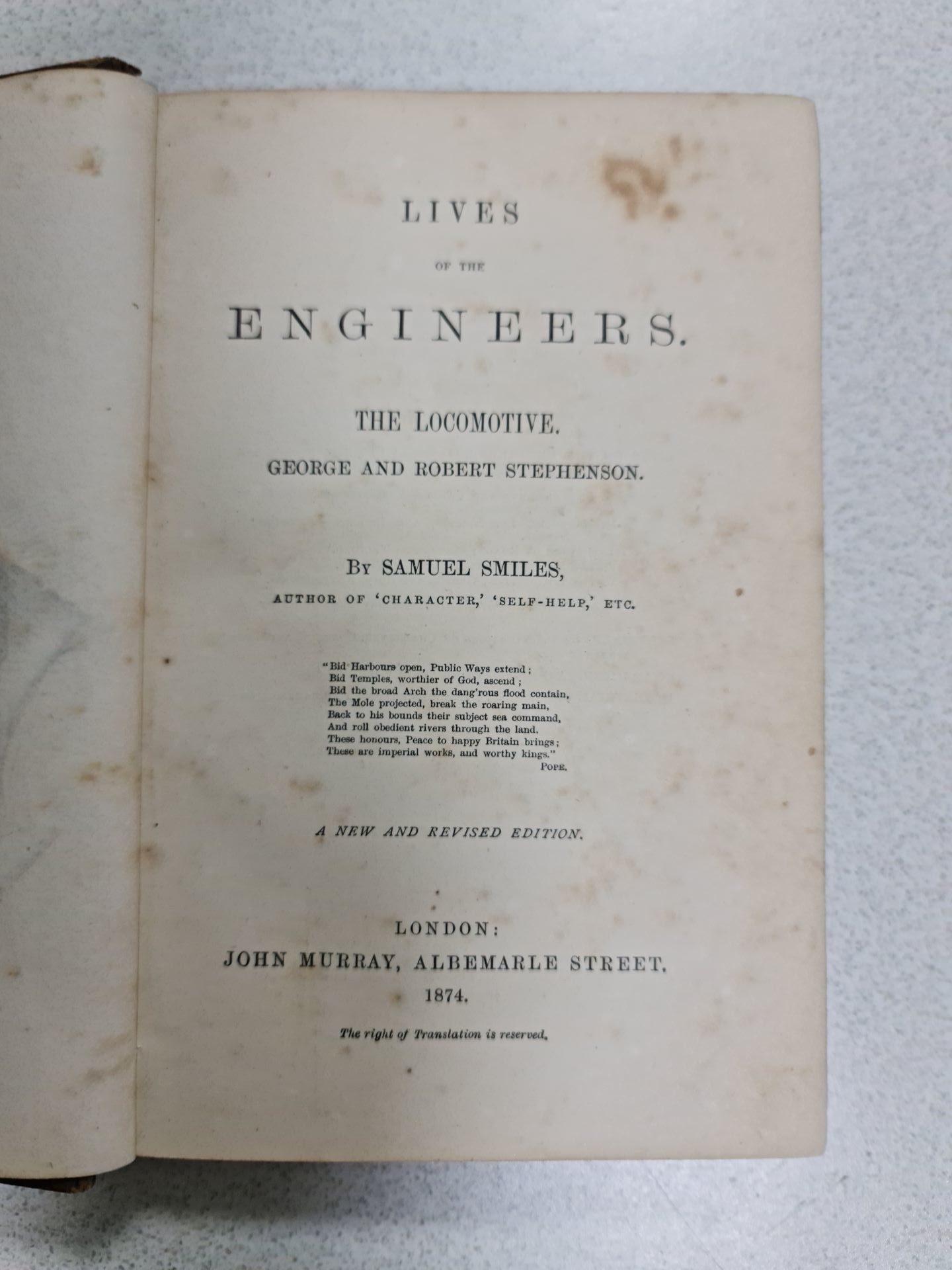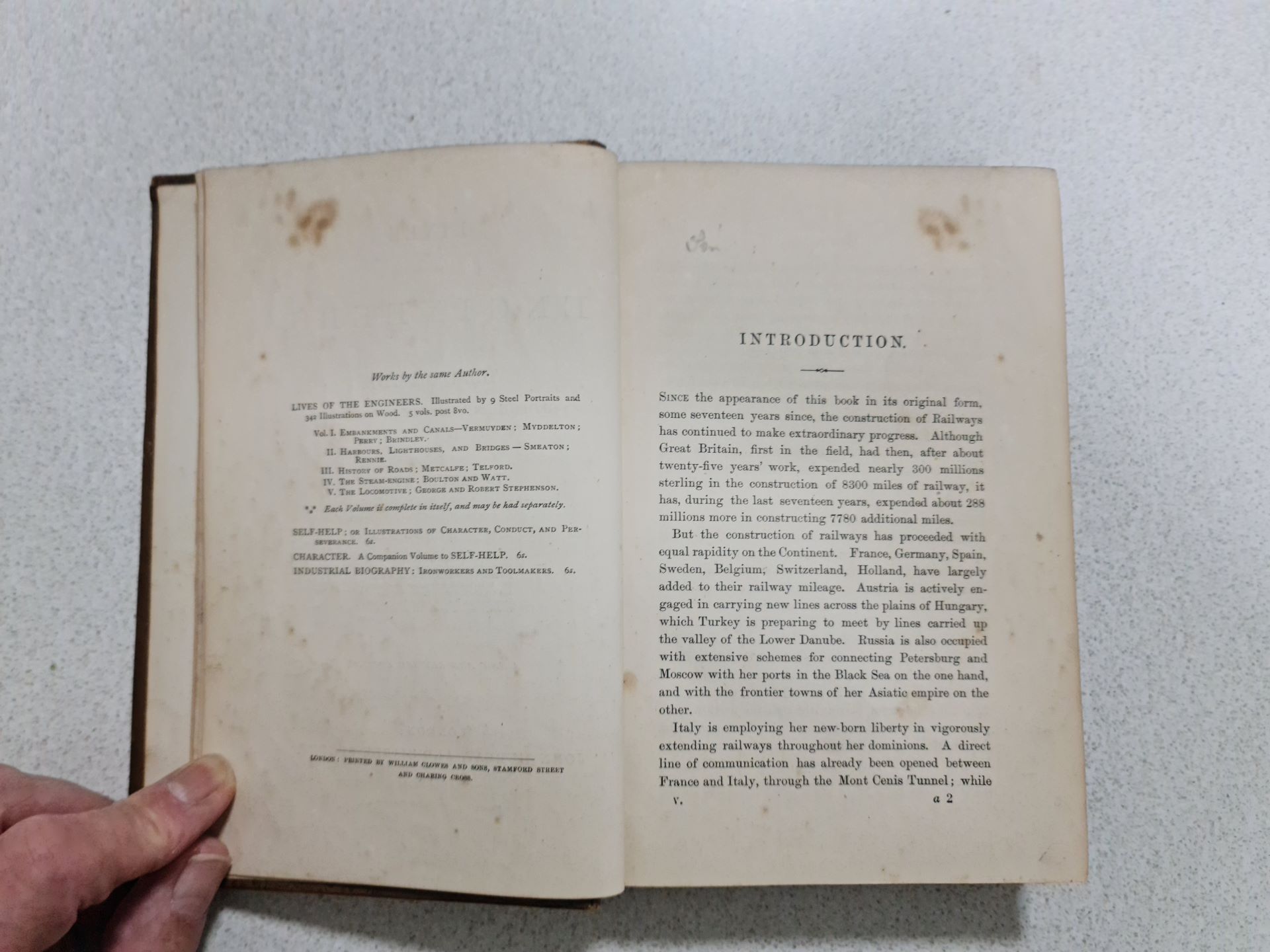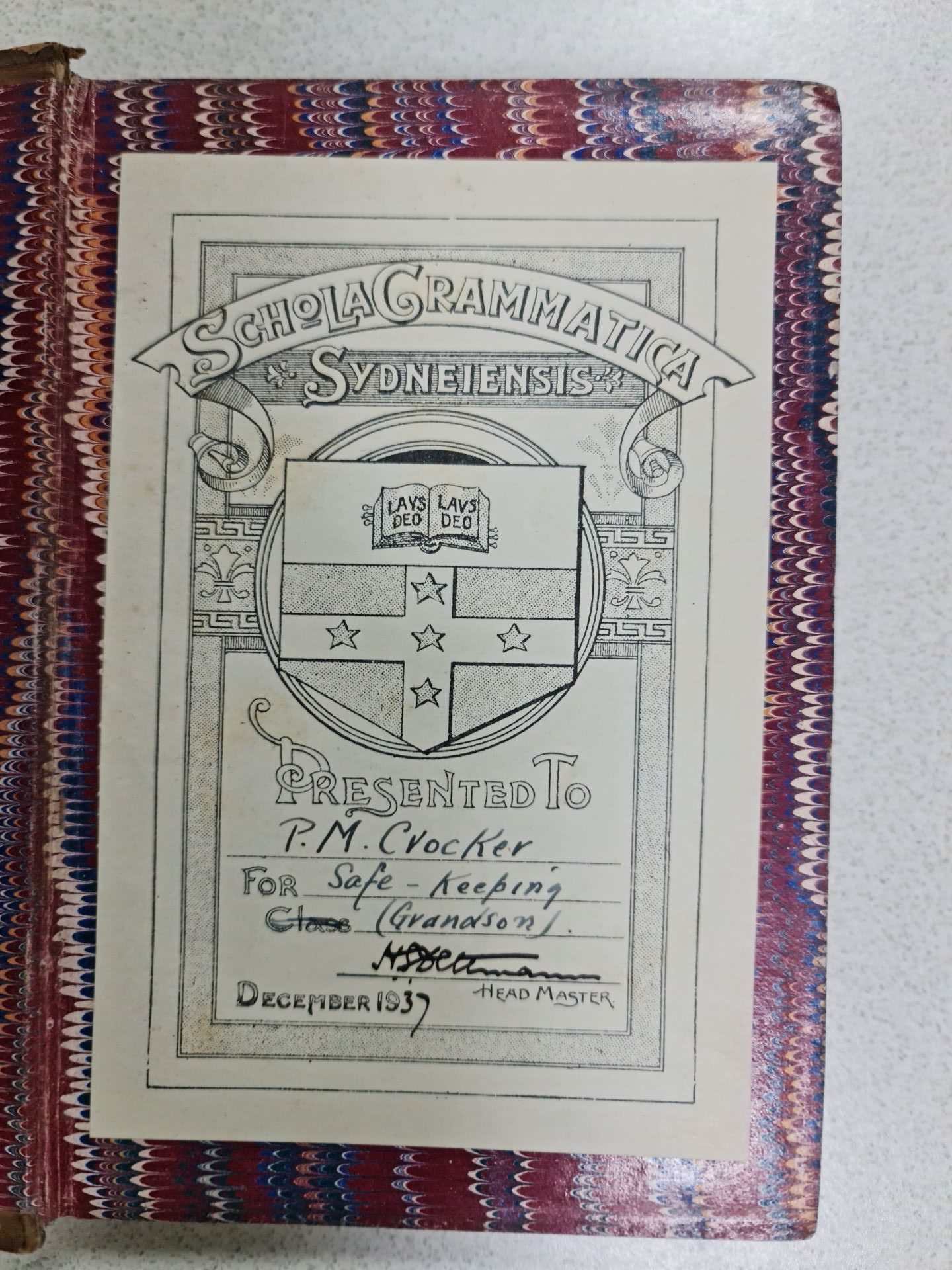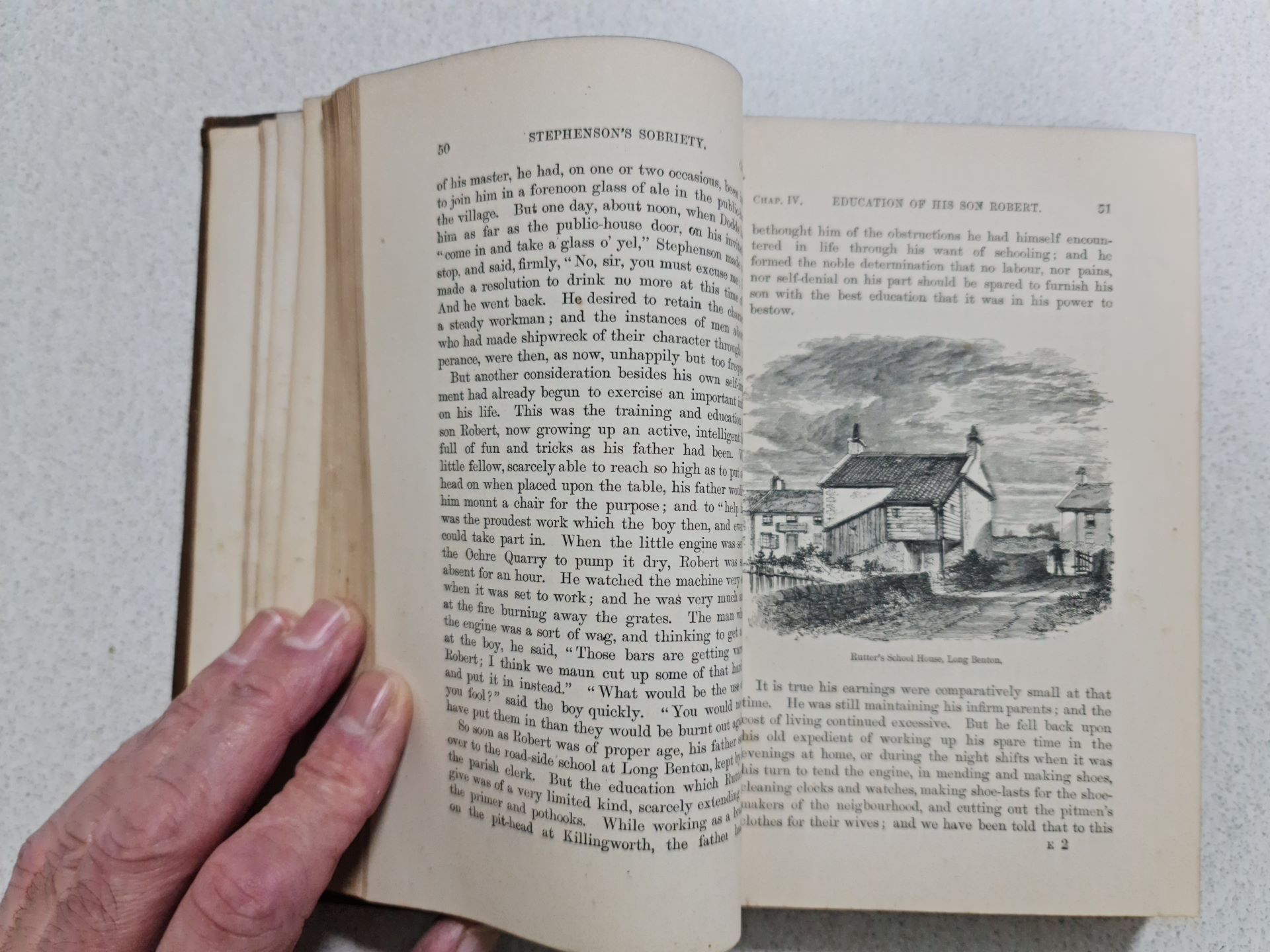Lives of the Engineers. The Locomotive – George & Robert Stephenson (1874) – Samuel Smiles
Only one in stock – This is an 1874 John Murray, Albemarle Street, London, FIRST EDITION of the ‘Lives of the Engineers: George & Robert Stephenson (1874)’ and considering this book is nearly 150 years old, it is in excellent condition. full leather bindings with gilt decorations including ‘Schola Grammatica Sydneiensis’ emblem embossed on front cover.
This book was a Sydney Grammar School prize for 1876 when it was awarded to H. D. Crocker. It was also awarded to P. M. Crocker in 1937 ‘for safe keeping’ (please see photographs). There is a pencilled notation an inside page, ‘Sydney Grammar Prize 1876’
If you require any further information, please do not hesitate to ask.
$4,750.00
+ Free ShippingDescription
This is an 1874 John Murray, Albemarle Street, London, FIRST EDITION of the ‘Lives of the Engineers: George & Robert Stephenson (1874)’ and considering this book is nearly 150 years old, it is in excellent condition. full leather bindings with gilt decorations including ‘Schola Grammatica Sydneiensis’ emblem embossed on front cover.
This book was a Sydney Grammar School prize for 1876 for mathematics when it was awarded to H. D. Crocker. It was also awarded to P. M. Crocker in 1937 ‘for safe keeping’ (please see photographs). There is a pencilled notation an inside page, ‘Sydney Grammar Prize 1876’ (Please see photograph).
This book has slight ageing spots on the first few (6) pages and on the tissue paper separating the Publishers Page from the first illustration, however, the inside book itself is in a pristine and an as-new condition. The leather gold coloured leather cover is worn, as one would expect a 149-year-old book. The book contains over 70 wonderful illustrations.
Book size 190 x 125 x 30mm.
If required, this book can be viewed prior to purchase. Further photographs can be provided.
Preface
‘George & Robert Stephenson’ is the definitive history of the invention and introduction of the railway locomotive and the railways, around the globe.
In 1857, the English author Samuel Smiles introduced the literary world to a new breed of man — the eminent engineer. The occasion was the publication of Smiles’ biography of George Stephenson, the self-taught engineer who played a singular role in creating the railroad industry in England. Smiles’ biography of Stephenson proved to be so successful that he went on to write biographies of several other eminent English engineers. These were later compiled and republished under the title ‘Lives of the Engineers.’
In writing Stephenson’s biography, Smiles took the approach of telling the story of the man through his works. And so, Smiles filled his book with extensive detail on the development of the steam locomotive and the early history of the building of the railroads. Perhaps more than any other technological development around the middle of the 19th century, the railroad brought revolutionary changes to the structure of society and to the lives of everyday people. Smiles wrote Stephenson’s biography to inform people of the origin and progress of the railway system.”
But, Smiles had another, more ambitious goal in mind as well. Smiles was both a technophile and a social progressive. He believed passionately that the industrial revolution was providing great opportunities for people to improve their lives. Smiles used the lives of George Stephenson and other eminent men of his era to exemplify the habits and traits of personal character that Smiles thought would guarantee success in the new, modern era then unfolding.
Smiles presents Stephenson as a Promethean figure — inventor, entrepreneur, master of technology, and lord of industry. In doing so Smiles invented a literary archetype for the engineer that was adopted by other writers, such as Jules Verne, Rudyard Kipling, and Ayn Rand, and endures to the present day in the fictional characters of Tony Stark and Elon Musk.
‘George & Robert Stephenson’ was written with the concurrence and assistance of Robert Stephenson, who also supplied the necessary particulars relating to himself. Such portions of these were accordingly embodied in the narrative as could with propriety be published during his lifetime, and the remaining portions have since been added, with the object of rendering more complete the record of the son’s life as well as of the early history of the Railway System, written by their close friend Samuel Smiles.
It provides detailed information on the worldwide progression of the railways, including financial outlays.























Reviews
There are no reviews yet.